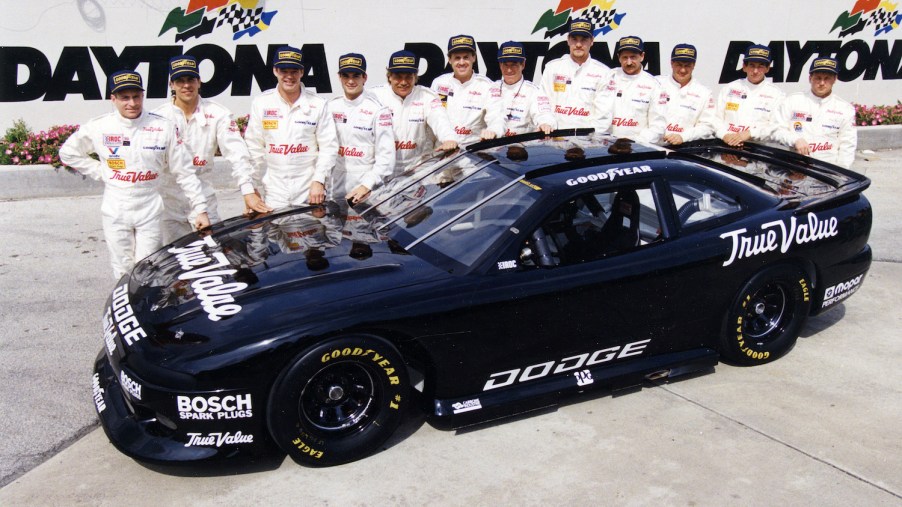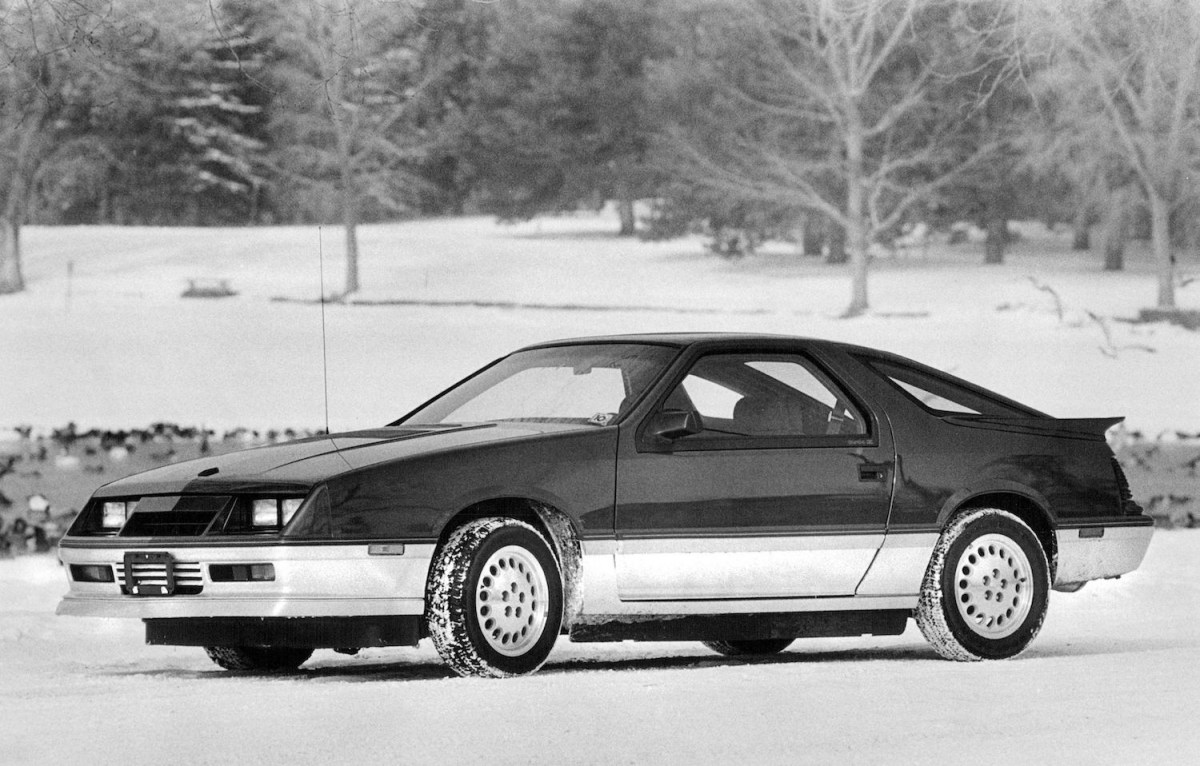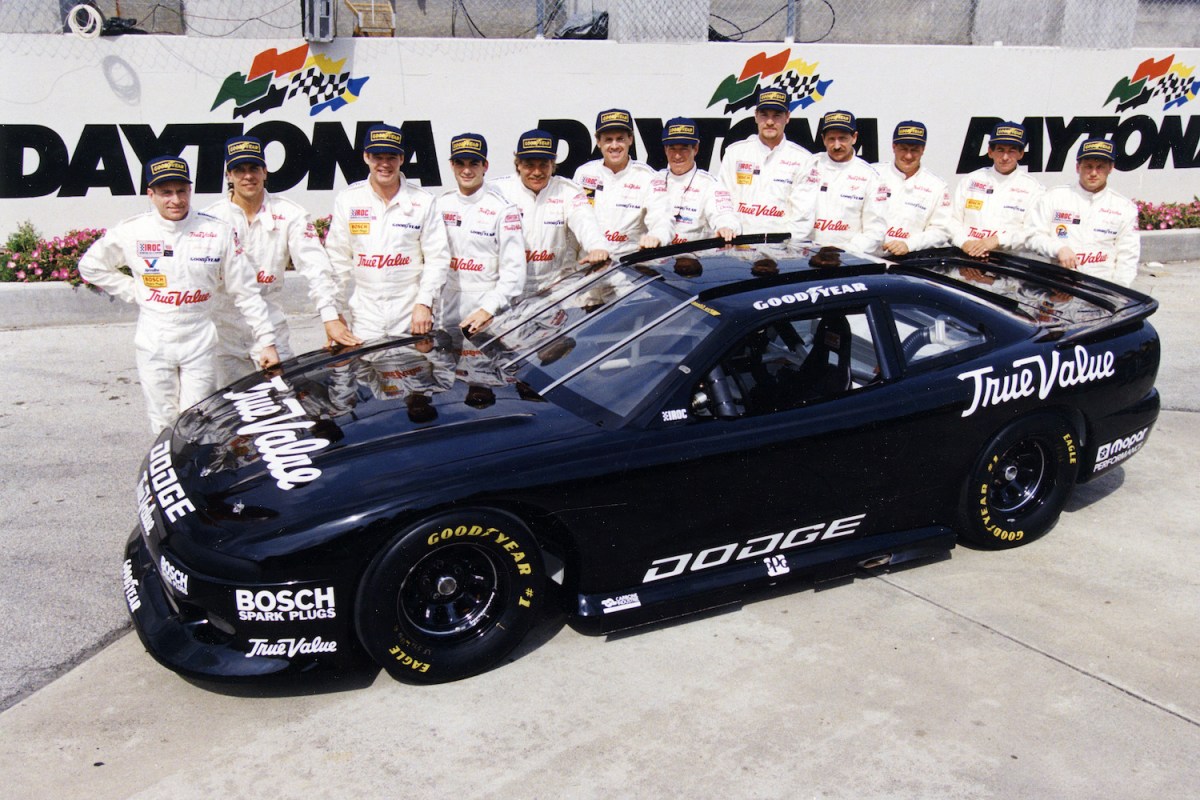
Mopar Once Sold RWD Conversion Kits for This Sports Car
The 1990s was a magical time for cars, especially sports cars. Streets were lined with the Mazda RX-7, Toyota Supra, BMW E36 M3, Nissan 300zx, and the Mitsubishi 3000GT. Each of these made a serious indentation on the world of sports cars because they were affordable and could perform. What was America doing at that time? Amidst some of the slowest Ford Mustangs and bulkiest Chevrolet Camaros in history, Dodge was up to something other than rebranding various Mitsubishi cars. In 1991, Dodge released the Daytona, a sports car that looked an awful lot like a second-generation Mazda RX-7.
How sporty was the Dodge Daytona?
The Dodge Daytona was a small hatchback from 1984-1993. It used multiple turbocharged engines as well as a 3-liter V6 from Mitsubishi. At the end of its tenure, the Daytona got an IROC trim, and owners could opt for the R/T performance package, which included the Dodge Spirit’s 2.2-liter turbocharged inline-four that made 224 horsepower. Not bad for a car weighing just under 3,000 pounds. There was still one major problem with the Daytona, and it was glaring. All that power went to the front wheels. It was a front-wheel-drive Mitsubishi Starion clone. Even Mopar thought this was blasphemous, so much so that it made a RWD conversion kit.
Converting a Dodge Daytona to rear-wheel drive is not easy

Generally speaking, you can’t just flip a switch and convert a front-wheel-drive car to rear-wheel-drive. You need to either pivot the engine so its mounted longitudinally or find a really small transmission on which you can attach the driveshaft. Then you have to mount the differential to the rear of the car, and if there’s no support, you have to make some. Mopar’s kit consisted of a 4.5” bolt circle conversion for $480, a conversion rack and pinion assembly for the steering at $300, and a RWD Daytona K-Member for $800. While those kits no longer exist, some fabricators are currently working on building kits to sell, like Allard Fabrications. Some owners take it a step further and convert the car to use a V8, which there are kits for as well.
Is it worth converting a front-wheel-drive car to be rear-wheel-drive?

For a vehicle that Car and Driver dubbed one of the best handling cars of the 1980s, the Dodge Daytona is probably not worth the trouble of converting to rear-wheel drive. It had a stable and responsive chassis from the factory, with a bit of a dead zone in the steering. The main reason to convert any car to rear-wheel-drive is to improve handling, but if it’s not needed, then why bother? Eventually the Daytona was succeeded by the Avenger, which was converted only for sanctioned road races, like the International Race of Champions pictured above.
The Daytona’s short wheelbase apparently closed at least some of the gaps left by its front-wheel-drive configuration. When all is said and done, you spent a ton of money and time on converting this Daytona to rear-wheel-drive when you could have spent the same amount of money on a third-generation Chevrolet Camaro with an LS1 swap. It just doesn’t seem prudent unless you have an unabashed love affair with the Dodge Daytona, which is understandable. For some swaps and conversions, that’s all it takes.


